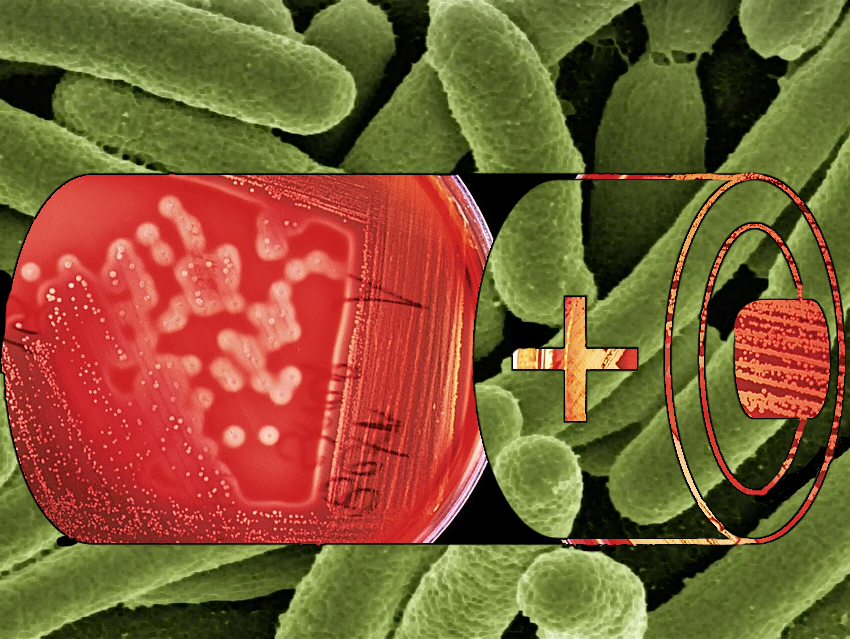Exolectrogenic microbes can generate electricity. They live in an anaerobic environment and use metals or special organic transporters instead of oxygen as recipients for the electrons released during their metabolic reactions. Researchers have been looking for ways to make practical use of these electro-microbes as biological electricity producers.
Christof M. Niemeyer and colleagues, Karlsruhe Institute of Technology (KIT), Germany, have developed a material in which exoelectrogenic bacteria can grow well and which at the same time effectively diverts the current generated by these microbes to electrodes. The researchers use bacteria of the species Shewanella oneidensis. These microbes, first isolated in the mud of Lake Oneida in New York, USA, can convert various heavy metal compounds into elemental metal, including iron, lead, uranium, mercury, and silver.
The scientists have produced a porous hydrogel consisting of carbon nanotubes and silica nanoparticles. These are interwoven by DNA strands. They then inoculated this conductive matrix with the bacteria. Shewanella oneidensis settled and multiplied in it. Other bacteria, such as Escherichia coli, only remain on the surface of the matrix.
The Shewanella-containing composite showed electrochemical activity, suggesting that this matrix can extract the metabolic electrons produced by the bacteria and transport them to the anode. The more bacteria colonized the conductive, synthetic matrix, the more the flow of electrons increased. When a DNA-cleaving enzyme was added to the matrix, the flow of current stopped. This was because the cut DNA strands interrupted the conductor paths and thus the electrons could no longer flow off.
- Cultivation of Exoelectrogenic Bacteria in Conductive DNA Nanocomposite Hydrogels Yields a Programmable Biohybrid Materials System,
Yong Hu, David Rehnlund, Edina Klein, Johannes Gescher, Christof M. Niemeyer,
ACS Applied Materials & Interfaces 2020, 12, 14806–14813.
https://doi.org/10.1021/acsami.9b22116




